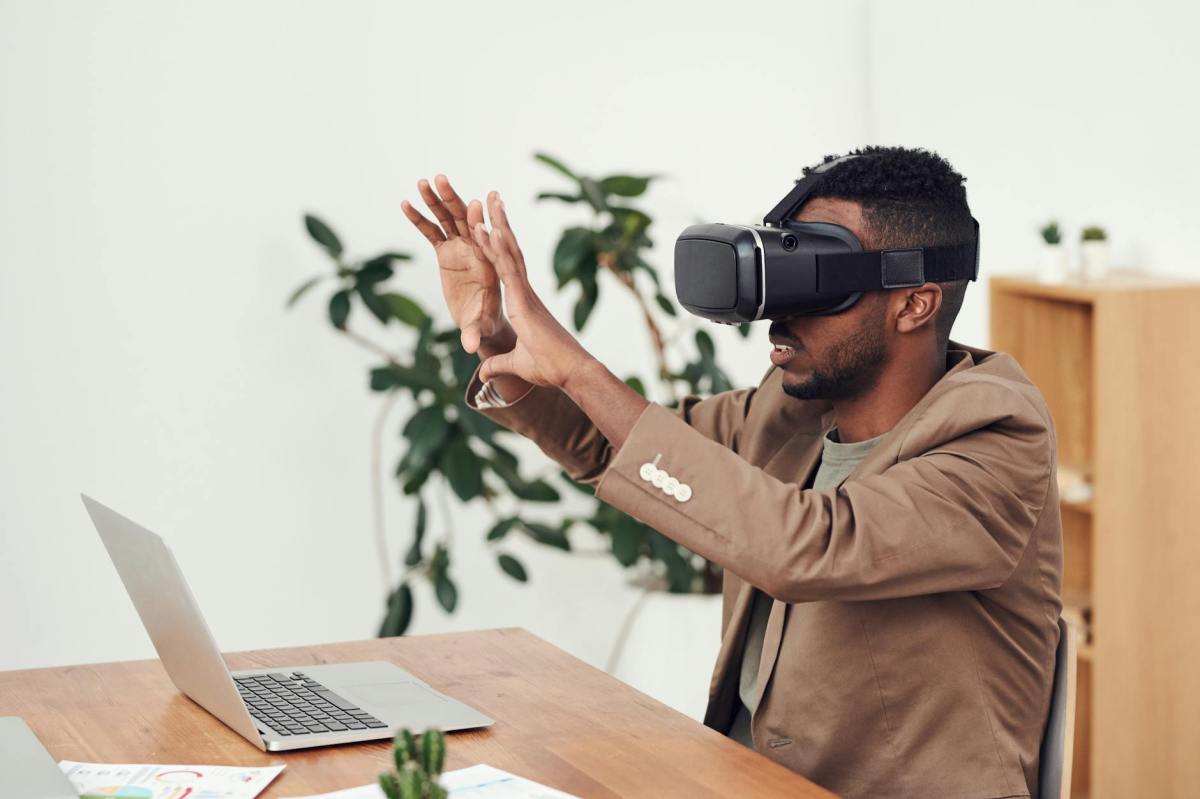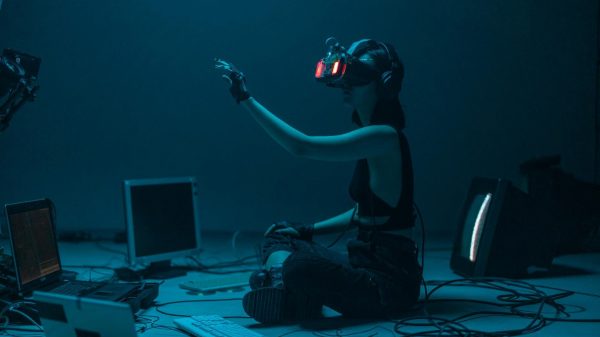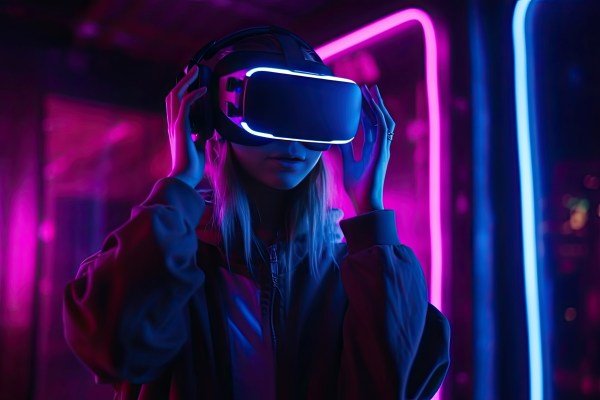What is the metaverse?
The reader will have noticed that this is not a novel concept. For example, the metaverse has long existed in the area of video games: titles such as Fortnite, Roblox or GTA Online are virtual worlds in which players can communicate and collaborate in a joint game through their characters (avatars), which can also be customised with skins and add-ons for a fee.
It is, in short, a three-dimensional space that only exists on a virtual plane and in which different people can socialise, collaborate on a job, learn subjects and participate in different activities, whether for fun or for work.
The emergence of prominent figures such as Mark Zuckerberg, owner of Meta, and his commitment to an alternative model of society to the real one, in which we could not only relate to each other, but also have a second life, properly speaking, has led to the popularisation of the concept of ‘metaverse’.
The concept ‘metaverse’ has its origins in a science fiction novel by Neal Stephenson called Snow Crash. In it, the author imagined an alternative world to the real one that could be accessed through a pair of glasses that allowed the reader to navigate in virtual reality through avatars.
Current examples of metaverse
What we once dismissed as simply ‘virtual reality’ has become an experience that goes far beyond playfulness, broadening our horizons in everyday life and in our work. Here we explore some current examples of the metaverse, such as the new Apple Vision glasses, Meta Quest from Meta or the Disney HoloTile treadmill.
Apple Vision Pro
One of Apple’s clearest attempts to market a product that would introduce them fully into the world of the metaverse, these are mixed reality glasses (virtual reality + augmented reality), which, as the name suggests, offer the wearer an enriched reality to the existing one.
These glasses use an operating system called visionOS, a three-dimensional interface that the company has called ‘Spatial Computing’. The default mode of the glasses is augmented reality, in which applications and tools that the wearer can operate appear to ‘float’ in real life.
The user can interact with the applications through their eyes and fingers, pinching in the air, moving elements, etc. For example, it offers the possibility of immersive viewing of large, high quality internet videos, placing virtual furniture in the home to see what it would look like in real life, and so on.
Apple Vision Pro can also help deaf people, thanks to apps such as Navi. This application generates subtitles from conversations in real time, as well as the ability to translate different languages on the spot.
Meta Quest by Meta
Mark Zuckerberg and Meta – from the name itself we can already see their intentions – have been from the beginning one of the agents most interested in the development of these virtual spaces.
Virtual reality is the main protagonist of the Meta Quest glasses developed by Meta. On their official website they offer two areas of specialisation with which the user can enter the world of the metaverse and Meta Quest: physical exercise and video games.
In terms of physical exercise, there are apps such as Holofit, which creates virtual spaces to move through using an exercise bike, elliptical trainer, rowing machines, etc. In addition, they also offer collaborative spaces for exercising in company, with apps such as FitXR.
Of course, VR videogames, immersive experiences that go a step beyond home gaming sessions, with titles such as Beat Saber, Superhot, etc., cannot be missed.HoloTile de Disney
Earlier this year, Disney announced a new product focused on the metaverse and physical activity: HoloTile. It is a special modular floor design – small tiles that move autonomously – on which the user can walk in any direction.
Currently, one of the major stumbling blocks of virtual reality is the inability of the user to physically move around the environment. This is achieved by means of special controllers, as if they were those of a video game console, operating joysticks for the movement to take effect.
However, the HoloTile, in the manner of a treadmill, could provide such freedom of movement without physical space being a handicap.
Sensory gloves
If being able to walk freely in the virtual world is an activity still in development, so is being able to ‘feel’ the elements that are part of the metaverse. One of the first developers in this field was Meta: as early as 2021, they reported progress in this area, and a year later, in 2022, they acquired Lofelt, a company specialising in haptic products.
The haptic gloves developed by companies such as HaptX and Meta itself are bulky devices connected via control consoles with a multitude of cables and tubes. More recently, the company Fluid Reality has developed gloves that are cheaper and lighter than those that have been developed so far.
The job possibilities of the metaverse
Any technological advance brings with it new jobs. The metaverse is no exception, and these are some of the jobs most in demand by companies today.
3D Animator
Immersive animated experiences require animators who are experts in three-dimensional environments. The 3D animator transforms flat objects into ‘lifelike’, voluminous, sometimes hyper-realistic figures. This is already widely used in the field of advertising.
For example, this ad is made with Unreal Engine 5, the latest iteration of the software specialised in creating virtual worlds for video games, virtual reality and interactive apps.
Blockchain engineer
The blockchain engineer is the professional in charge of the design, development, implementation and maintenance of systems based on blockchain technology.
This technology provides secure and decentralised infrastructure for the metaverse, i.e. users can own and control their digital assets, be they avatars, skins, land, etc., without relying on a central intermediary. This also prevents fraud within the metaverse.
Blockchain technology also facilitates the virtual economy of the metaverse. Within it, users can use cryptocurrencies for the transaction of goods and services. In addition, blockchain technology can also make the metaverse a more engaging reality by providing games and experiences through which participants can earn rewards such as cryptocurrencies or virtual goods.
Augmented and virtual reality hardware and software engineer
A logical profession is that of a hardware and software developer focused on augmented and virtual reality: new devices and applications that offer a more comfortable experience in real life and a more immersive one in virtual life.
Cybersecurity expert
Cybersecurity experts of the metaverse are people who make the metaverse a safer place: preventing fraud, NFT asset theft, avatar hacking, etc.
The metaverse faces a future in which only technological advances are the limit. Technology, on the other hand, is constantly improving so that humans can embark on their next evolution.








